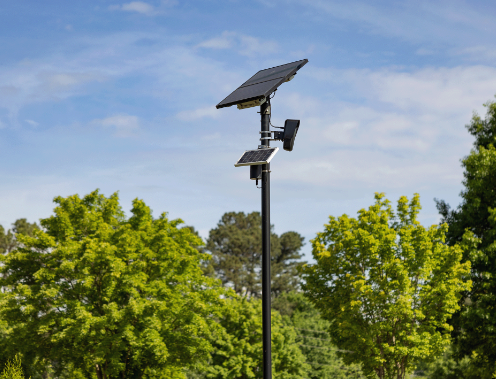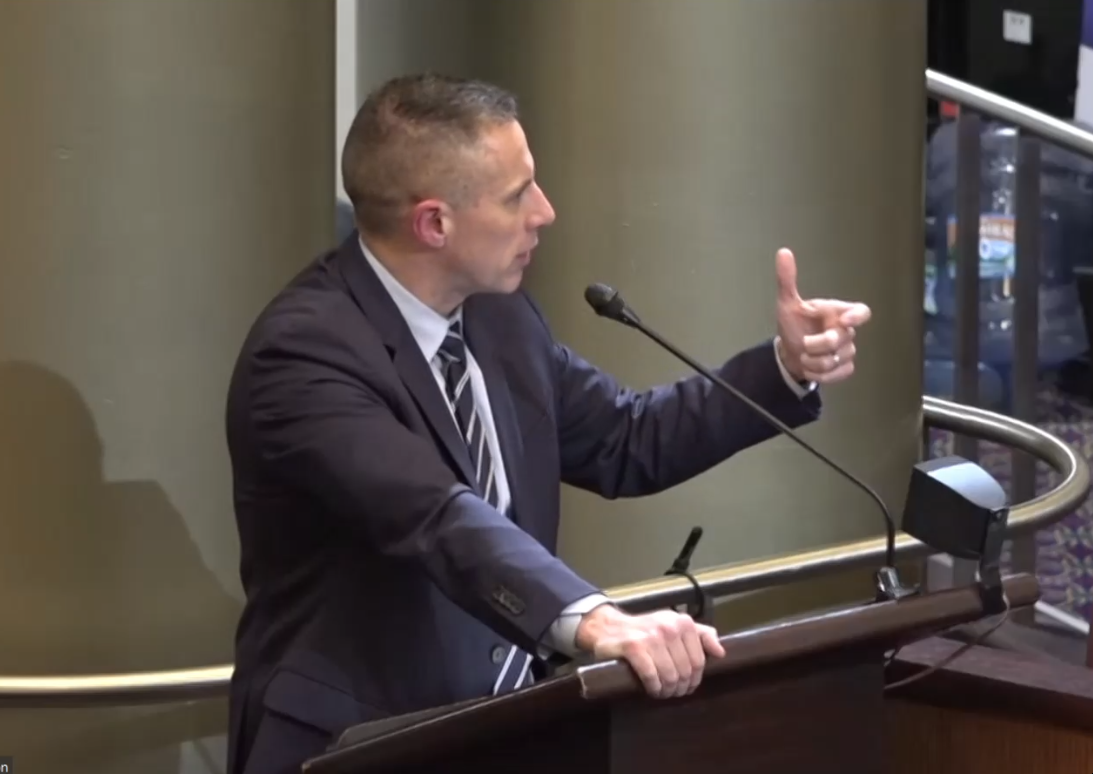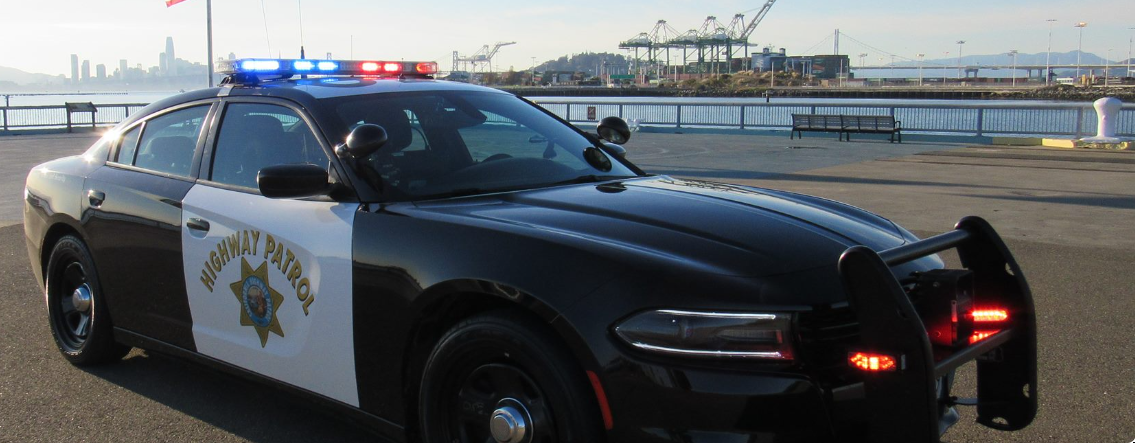Last October, City Council passed a use policy and authorization for a go-to stationary Flock ALPR system...that placement appears to have never happened.
California Governor Gavin Newsom's announcement this week that an operation consisting of “120” CHP officers will be deployed in Oakland and the surrounding region has put the City's own stalled Automated License Plate Reader [ALPR] program back in the spotlight. Last October, Oakland’s City Council passed a use policy and authorization to enter into a contract with Flock, a go-to stationary ALPR system already in use in dozens of jurisdictions in California. The system, according to the legislation and accompanying reports, would be paid by a promised state loan of $1.2 MM for the purpose. That placement appears to have never happened.
The unexpected deployment also brought up questions at a Police Commission meeting Thursday after it was revealed that CHP will follow its own policies and work semi-autonomously.
City's ALPR Flock Placement Never Got off the Ground After Approval in October
Claims by Newsom that the new CHP rollout would also include the use of ALPR has prompted a renewed look at the City’s efforts to stand up its own recently approved ALPR system after years of controversy about ALPR efficacy and oversight in Oakland. The Oakland Observer sent an inquiry to the City in early December, requesting the timeline for the system—in response, a City spokesperson told this publication via email that two-thirds of the 300 camera project would be installed and ready for use by the end of December, 2023, with another 100 cameras placed and activated by January, 2024.
The final contract details are being finalized and then installation will begin. It is anticipated that over 200 camera systems will be installed by the end of December with the remaining 100 in early January. The first 200 are relatively easy installs as they will be on existing light poles. The remainder will require a bit more work either because they require a new pole and excavation to be done or because weight-load calculations for certain locations are needed because the installation will be on the mast arm of a traffic signal as opposed to a pole that can handle the load.
The Council legislation that gave the City Administrator the go ahead to negotiate a contract with Flock also authorized the City to enter into the agreement to accept the $1.2 MM state loan. The response caveated that the contract with Flock was still being finalized.
OO followed up with a request for an update on Tuesday, with this eventual response:
“As mentioned in Governor Newsom's recent announcement: 'As part of this operation, the CHP will deploy license plate reader technology that will help identify and recover stolen vehicles.'
Operations and installation management for the plate reader and camera investment announced in 2023 will be managed under this effort, and most directly by CHP – so project detail questions should for the most part be directed to them. The City is grateful our state partners saw the value in further investing in this program and we look forward to supporting that investment and doubling down on our collaborations to support public safety in Oakland.”
It’s clear that no work to place the Flock system has been undertaken, nearly six months after Council approved moving forward on the system, its use policy and the state loan arrangement and two months after the original response from the City. Requests for more information from both the City and from the CHP have so far gone unanswered—and in a puzzling turn, the Thao administration now claims that updates on the Flock system are the role of the CHP to provide. The pause on Flock follows the OPD's casual revelation at a meeting early last year that it had suspended its own car-mounted ALPR system shortly after the enthusiastic passage of a use policy lauded by former Chief Leronne Armstrong.

Questions Remain About CHP's Proposed ALPR Program
The CHP, for its part, has not responded to requests for clarification and more information by this publication. It’s unclear when work to implement the approved Flock system will occur, or even if the parameters of the plan discussed in approved policy in October are still on the table. Oakland’s original Flock placements were to be carried out by OakDOT and Public Works in areas adjacent to freeways and other key areas; it’s not clear how the Flock equipment will be placed now.
Brian Hofer, the Chair of the Privacy Advisory Commission that helped craft and then approved the Flock ALPR system, told this publication that he was unaware of the shift to CHP control until local media started reporting on it. Hofer said he believes the prime placement locations are limited and that those will likely remain, but was concerned about other aspects of CHP’s control.
“No annual report, no efficacy determination. No local control. CHP plays by their rules, not ours. Lengthier retention means greater accumulation of data, greater privacy infringement. CHP is subject to the Public Records Act, but they're awful about responding,” Hofer said.
CHP’s Operation is Mostly Autonomous and Still Shrouded in Secrecy
Interim Chief Darren Allison and OPD Captain Casey Johnson gave some of the only substantive description of the CHP roll out during an OPD briefing Thursday at a regular meeting of the Police Commission, but it was also frustratingly limited and contradictory. OPD Captain Casey Johnson gave the initial briefing, noting only that CHP would operate in parallel with OPD, with CHP policies and procedures—Johnson said that OPD had shared its departmental procedures and policies, including court-ordered dictates, but that CHP is under no obligation to follow them. Johnson also noted that CHP’s complaint and investigation process will remain separate. The CPRA and Police Commission will have no role, nor will OPD's Internal Affairs. Much of Johnson’s commentary seemed to alarm the Commissioners.
Chair Marsha Peterson said she was troubled by the independent operation of CHP in the city—especially, because Johnson said he could not list the CHP’s rules of engagement that would be followed in Oakland.
“I have a great deal of concern about this. Because what I hear you saying is that CHP gets to run wild in the City of Oakland under whatever rules they have, and we don’t even have a copy of [the rules]...and that’s unacceptable,” Peterson said.
Alternate Commissioner Ricardo Garcia Acosta, who works as a community violence interrupter in tandem with the Department of Violence Intervention [DVP], was also concerned, noting the lack of information for street-level engagement workers on CHP’s engagement.
“There’s a whole eco-system of front-line providers that are dealing with violent crime in partnership with OPD…it’s already been brought up as an issue that a lot of those providers that are on the frontline are in the dark around this operation. I’m really concerned that there is going to be conflict on the street-level…” Garcia Acosta said.
Commissioner Regina Jackson claimed she’d been told that the initial deployment of the CHP officers would be for one week only, but Johnson and Allison denied that was the case. Johnson said the deployment is open-ended and at-will from CHP.
Interim Chief Allison Stresses Collaboration with OPD, Focused CHP Operation
Later comments by Interim Chief Allison seemed intended to walk back some of Johnson’s alarming bluntness. Allison said there would be some level of what he described as “oversight”, and constant communication on the CHP deployment from OPD's command.
“There’s a captain that is the liaison, it’s at the command level. They have an operations plan, we have an operations plan…but it’s not just ‘go out there and do what you want.’ There are, in collaboration with OPD, certain missions they have to work on, more investigative in nature, in things that were identified: retail theft, stolen vehicles, violent crime, dangerous driving, and they are deployed in a manner in collaboration and consultation with OPD,” Allison said.

Allison implied that on issues such as pursuit, where Oakland’s policies differ, OPD would be able to temper the CHP response, but his commentary reinforced Johnson's original commentary that CHP will follow its own policies and direction.
“For this operation, we have collaborated with our air support…having our air support up to mitigate and mediate having high speed chases is one of the strategies we’re using…we can’t force them to follow our policies, but we can help mitigate any risk that comes with their operating in Oakland,” Allison said. “The collaboration and oversight will give us good direct communications to be able to either say, hey we handle things this way or that way in a more effective and quicker manner than we’ve had in other collaborative efforts in the past.”
Allison's comments appear to be a clear reference to previous collaborations with outside law enforcement that have led to those agencies violating Oakland’s rules and policies. OPD is required to brief outside agencies operating in the city of Oakland on all policies, but the agencies are not required to follow Oakland police rules.
Previously, CHP has used lethal force on Oakland residents, shooting one resident and killing another accused of a crime in one day in 2014. CHP also killed Erik Salgado in 2020 during a stolen vehicle operation that began on a freeway. The process took years to reveal public information, or deliver any accountability, and ended with the officers involved avoiding any penalties.
In previous iterations of CHP intervention in Oakland, an MOU was used and payment provided to CHP—but the recent iterations of deployments since 2021 have not involved MOU, and have largely been CHP led.
In 2020, CHP used its sophisticated plane-mounted surveillance system to spy on protest actions in Oakland, according to the ACLU. Residents reported CHP's plane circling for an extended time over parts of downtown, north and west Oakland last week. OPD has a history of calling other law enforcement agencies under mutual aid, but being unable to control them, to violent outcomes.
CHP was contacted for this reporting, but has not responded to date.

Comments ()